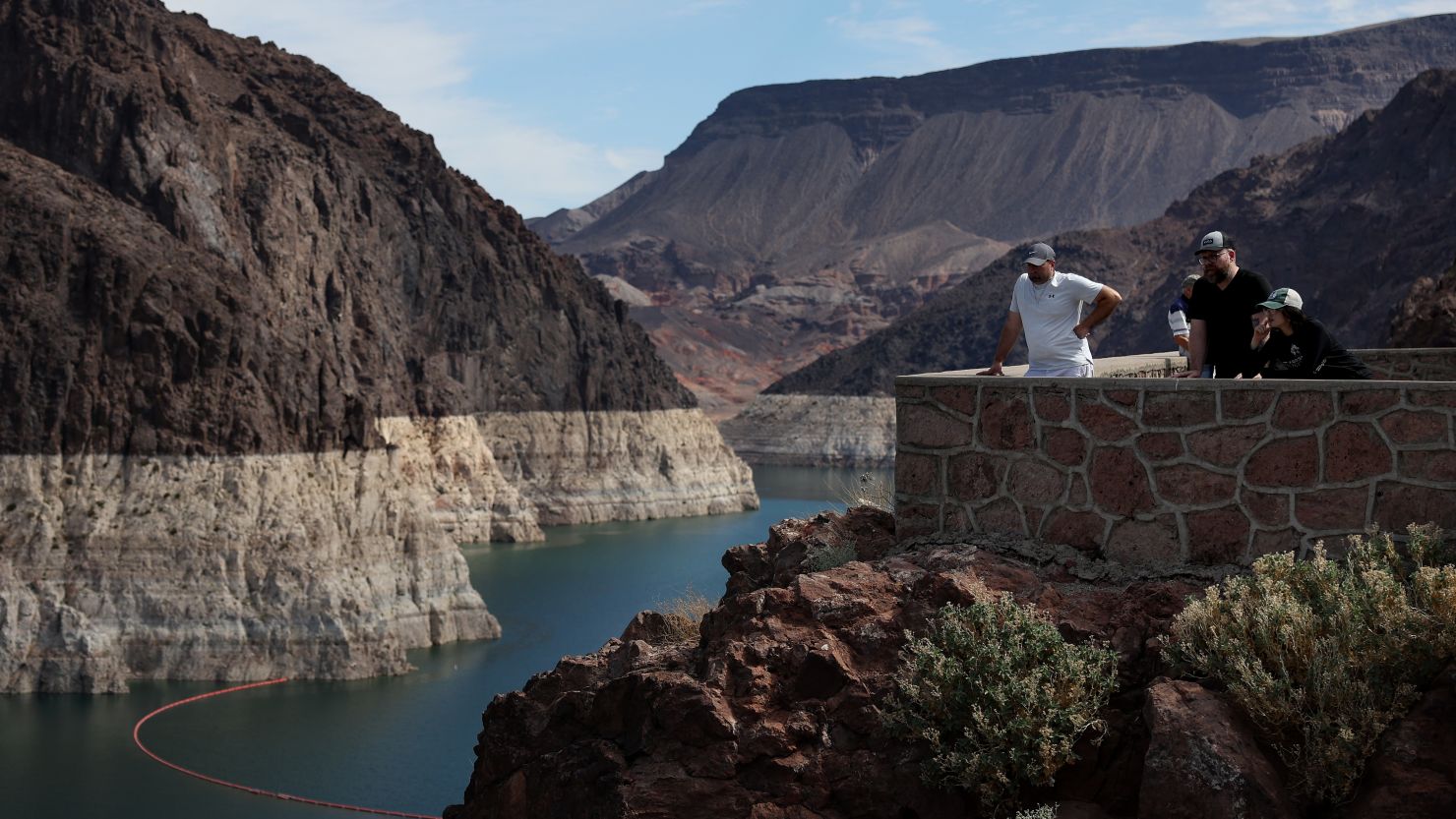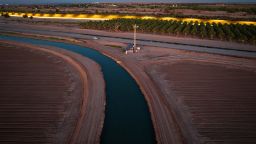As concerns grow over the future of the drought-plagued Colorado River system, the Biden administration has announced how it intends to pay farmers, cities and Native American tribes in the Southwest for significant, voluntary water cuts.
The money is coming from $4 billion in drought relief funds in the Inflation Reduction Act, Democrats’ recent climate law, and is primarily focused on encouraging water cuts in the three lower Colorado River Basin states – California, Arizona and Nevada.
The Interior Department said the new program will pay applicants a fixed amount of money per acre-foot of water they can leave in drought-stricken Lake Mead, the country’s largest reservoir. An acre-foot is around 326,000 gallons of water, or half of an Olympic-size swimming pool.
And the longer they can agree to cut their water usage, the more money they will receive: A one-year agreement gets $330 per acre-foot, two years gets $365 per acre-foot, and three years gets $400 per acre-foot, according to the department.
Some stakeholders have already announced they are considering cutting hundreds of thousands of acre-feet per year. The department said the payout will be contingent on a confirmation those cuts were made.
Interior Secretary Deb Haaland said in a statement that the West’s drought is “one of the most significant challenges facing our country” and that the department “is committed to using every resource available to conserve water and ensure that irrigators, Tribes and adjoining communities receive adequate assistance and support to build resilient communities and protect our water supplies.”
The question now is whether states and stakeholders will use that money to make the kind of drastic cuts needed to save the river and avoid a full-blown water crisis in the West.
In June, US Bureau of Reclamation Commissioner Camille Calimlim Touton said that Colorado River states must negotiate a way to slash 2-4 million acre-feet of water usage per year – which is as much as 30% of their total usage. As those difficult negotiations continue, some hope the federal money will provide a financial cushion for communities, farmers, and Native American tribes make cuts and leave more in the country’s largest reservoirs, Lake Mead and Lake Powell.
Arizona Department of Water Resources director Tom Buschatzke, one of the main state negotiators, said he is worried too much priority will be given to compensating stakeholders for short-term cuts, instead of demanding long-term water conservation and systemic change.
“I am a proponent of not being in a place where the $4 billion of IRA money is gone and we haven’t created any long-term benefit,” Buschatzke said. “That would be the worst outcome of all. The money will be gone.”
Interior noted in its Wednesday announcement that it will accept long-term proposals to fix water infrastructure in the West and promote sustained conservation.
Some states have already floated how much water they’d be willing to give up in exchange for federal money. Last week, four major California water agencies proposed cutting their annual allotment of river water by 400,000 acre-feet, or around 130 billion gallons. In order to make the cut, the agencies said they “would need to utilize funding opportunities” from the climate law.
But Buschatzke thinks the situation on the Colorado River is so “dire,” that voluntary cuts won’t be enough to save the river – or its water users. He believes mandatory cuts from the federal government should be part of the equation.
“I don’t think we can get there purely voluntarily,” Buschatzke told CNN. “We can’t pay people forever to do this. It’s not a sustainable process to pay people forever for reductions.”



